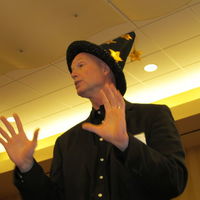ASHRAE just published a new Standard, 228 "“Standard Method of Evaluating Zero Net Energy and Zero Net Carbon Performance”. That’s a mouthful and not easy to get out in an elevator speech, but it does establish “rules” for how you define net zero energy and carbon. [Full disclosure, I was on the Standards Project Committee that created 228-2023]. There are several items of note from the pertinent part of Chapter 8:
- There is a limit on the amount of off-site renewable energy that can be used to render a project net zero (section 8.2). I call your attention to Tables 11/12 (which, even though it is in IP units, lists maximum allowable EUI in the form of kWh/sf/yr instead of kbtu/sf/yr – to get to the more familiar btu-based EUI, multiply the Table number by 3.4). For example, for a hospital/inpatient health building in Climate Zone 2A has a limit of 115 kWh/sf/yr (392 kbtu/sf/yr) that can be procured to get to net zero. For a multi-family building of greater than 5 units, located in Climate Zone 3A, the limit is 30 kWh/sf/yr (102 btu/sf/yr). These are not unreasonably low limits – this limit has been established to keep “bad” buildings from simply buying net zero qualification.
- There are qualifications for what constitutes off-site renewable energy (sections 8.3, 8.4, and 8.5).
- RECs associated with procured energy must be retired.
- That renewable energy CANNOT be accounted for in the grid emission factor. The utility that connects to the renewable energy source is going to pitch a fit about that.
- Instead of RECs, you can also purchase renewable energy directly, but there are rules for that – the renewable generation must be
- on property owned by the entity seeking zero energy certification, OR
- a community facility, OR
- directly contracted and purchased accordingly from a 3rd party for a minimum of 15 years.
- Furthermore, the generation source must be located where the energy can be delivered to the site by
- Direct connection
- The local utility or distribution entity
- By an interconnected electrical network such as the ISO or RTO that serves the building site
- There is a discount factor (mostly to account for transmission loss) on off-site renewable energy of at least 5% and can be as high as 25%. It depends on when the renewable energy source was placed into operation (not when the energy is contracted), and older sources are more significantly derated.
- The rules for carbon offset start with Section 8.6. Arguably, the most important of these is the requirement that the carbon must be sequestered within 12 months of the emissions being offset. This practically eliminates many biogenic sequestration projects (like buying tree seedlings and counting the carbon sequestered over the trees’ lifetimes to offset a single year’s carbon emissions). It is also of note that this Standard does NOT apply to embodied carbon – however there is an Informative Appendix C that talks about embodied carbon that doesn’t exactly tell you how to account for embodied carbon. The carbon offset must permanently sequester carbon for a minimum of 200 years, and have little risk of release of the sequestered emissions – so, once again, a forest that can be burned down doesn’t qualify.
- The carbon offsets include accounting for fugitive refrigerant global warming impact.






Add new comment
To post a comment, you need to register for a BuildingGreen Basic membership (free) or login to your existing profile.